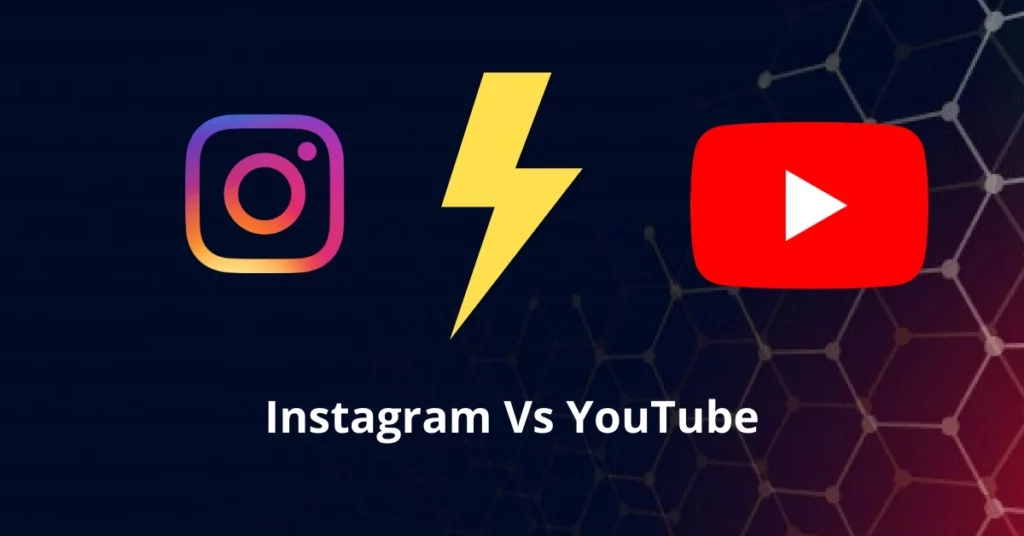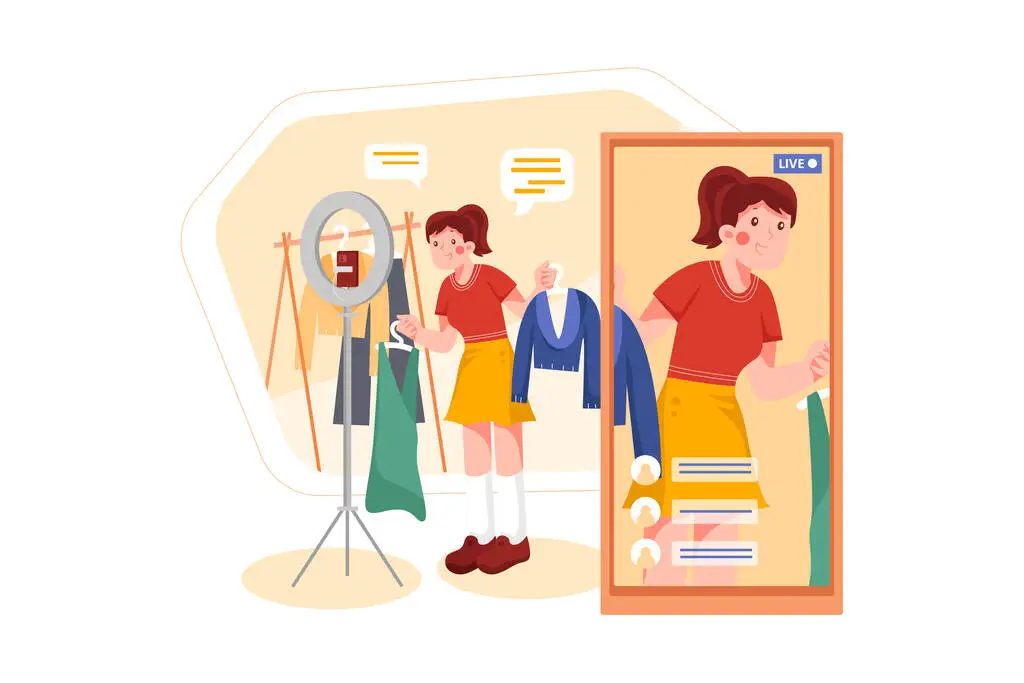Instagram vs YouTube: Which One is Better for Your Brand in 2025?
This thought is very common now for content creators and marketers due to high demand and production of short video content.
Social media platforms like Instagram and YouTube are two of the most popular tools used by businesses to connect with their customers and reach new heights.
So let’s take a look at some of the key differences between Instagram Vs YouTube and see which one might be best for your business in 2025.

Introduction
The way we communicate, interact and share information has transformed due to social media.
There are several platforms on the internet for people and companies to communicate with their audiences, from Facebook and Twitter to Tik Tok and LinkedIn.
Instagram and YouTube for example are two of the most influential and commonly followed social media platforms.
It’s not only for social media but there are search engine like google where users search the queries and brands push the relevant content to grab the attention from search engine too.
But in 2023, time has changed and the majority of the active users are consuming long videos for tutorials and short videos for information with entertainment.
Instagram is a picture and video sharing app that emphasizes on visually appealing material and short-form videos with over billions of monthly active users.
YouTube on the other hand is a video-sharing platform that too has over billions monthly active users and specializes in long-form videos and vlogging.
I’ll discuss about the user demographics, content, engagement and monetization options of these two different platforms in full depth in this post.
User Demographics

It’s important to note that these are stereotypes and may change based on the niche and material. New feature and product releases may also influence the demographics of the platform.
Content

Engagement

Keep in mind that both platforms have different algorithm to promote the content and drive engagement on it.
And you can also try both the platform to notice the difference on video views for similar content type.
One thing which works best on both the platform is “live video” because it helps content creators to interact with the subscribers and followers effectively.
Monetization

It’s important to keep up to date with platform developments because Monetization options may change over time as platforms update their features and policies.
Must Read : How To Grow Instagram Followers Fast In 2025
Features Comparison
It’s important to note that both Instagram and YouTube are designed for distinct types of material and audiences when comparing features.
Instagram is a visually rich platform that prizes polished, curated photographs and short-form online videos.
Instagram also allows users to produce and modify photographs and videos, as well as adding text, stickers and animations to enhance visual storytelling.
Users can connect with popular influencers and brands can partner with them to promote their products or services on Instagram videos, which is also known for its strong influencer culture.
YouTube on the opposite hand is primarily a video-sharing service with a focus on long-form videos and vlogging.
It’s oriented toward longer, more in-depth material and enables users to post videos that may be hours long.
Creators can also optimize their material and monetization strategies thanks to YouTube’s more extensive analytics and more detailed audience behavior information.
Live streaming is also possible on YouTube, as is real-time interaction with viewers.
Instagram is more focused on e-commerce and visual content, whereas YouTube provides more alternatives to make money via advertisements, sponsorships, subscriptions and additional analytical tools for the creators.
In addition, Instagram appeals to a younger, more urban audience, whereas YouTube appeals to a broader range of people and has a larger user base.
Future Scope
The future of Instagram and YouTube looks promising as both platforms continue to evolve and adapt to new technologies and user preferences.
Instagram is continually expanding its offerings to include more e-commerce capabilities, such as shoppable posts and Instagram Shopping, making it an increasingly popular platform for brands and businesses.
Additionally, Instagram has recently introduced new features such as Reels and IG chatbots to allow users to interact more with their audience, which is expected to continue to grow in popularity.
YouTube on the other hand is also seeing an increase in live streaming, which is becoming a popular way for creators to connect with their audiences.
YouTube is also exploring new ways to monetize its content, such as by launching YouTube Premium, a subscription service that provides an ad-free viewing experience and exclusive content.
As technology continues to advance and the way people consume content evolves, both Instagram and YouTube are likely to continue to adapt and offer new features and monetization options to users and brands.
Conclusion
Frequently Asked Questions on Instagram Vs YouTube
What are the key differences between Instagram and YouTube?
YouTube is mostly about short and long-form videos, whereas Instagram is mostly about short-form videos. Instagram offers more valuable likes and comments, whereas YouTube offers more value in terms of views and watch time. YouTube appeals to a larger demographic than Instagram, which appeals to a younger, more urban clientele.
Which platform is better for e-commerce?
Instagram is more likely to e-commerce with features like shoppable posts, Instagram Shopping, and a greater emphasis on visual material. YouTube is better at e-commerce than Instagram, but it is less good at informative, educational, and instructional content.
What are some monetization options for Instagram and YouTube?
Sponsored posts, affiliate marketing and shoppable posts are examples of monetization tools available on Instagram. Advertisements, sponsorships, affiliate marketing and YouTube Premium subscriptions are all examples of ways to earn money on YouTube. YouTube also provides means for creators to raise money through Super Chat and channel memberships.
Is it better to focus on one platform or use multiple platforms?
It depends on your specific goals and audience. You may find that one platform is better suited to your content and audience, while another platform may be better for monetization. It’s also possible to use multiple platforms for different purposes and target audience.
Are the demographics and engagement metrics on both platform are fixed?
The demographics and engagement metrics are generalizations based on current usage patterns but it’s not set in stone. Platforms are always evolving, and new features, products and updates can cause changes in the demographics and engagement. Additionally, different niches and content may have different demographics and engagement patterns.
